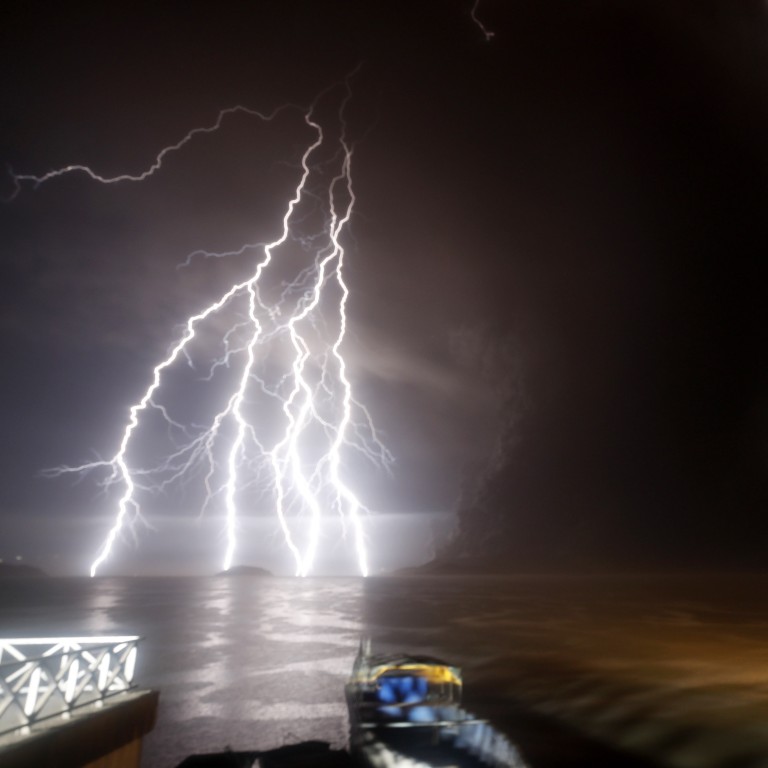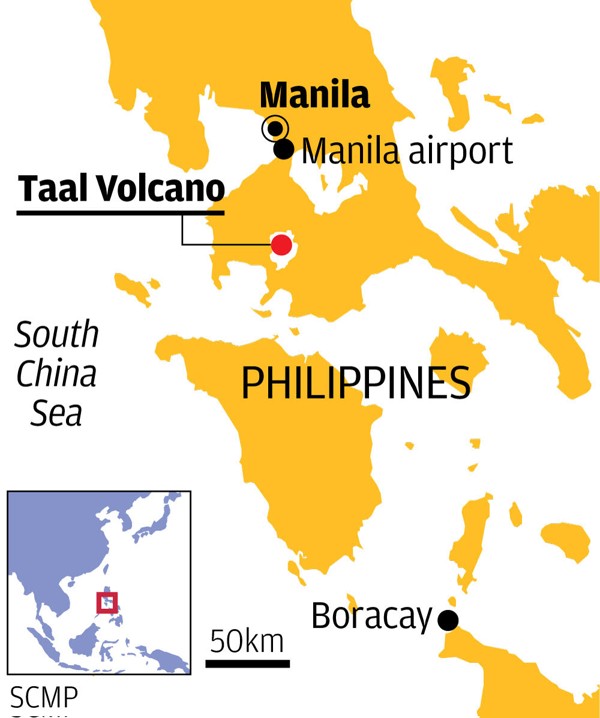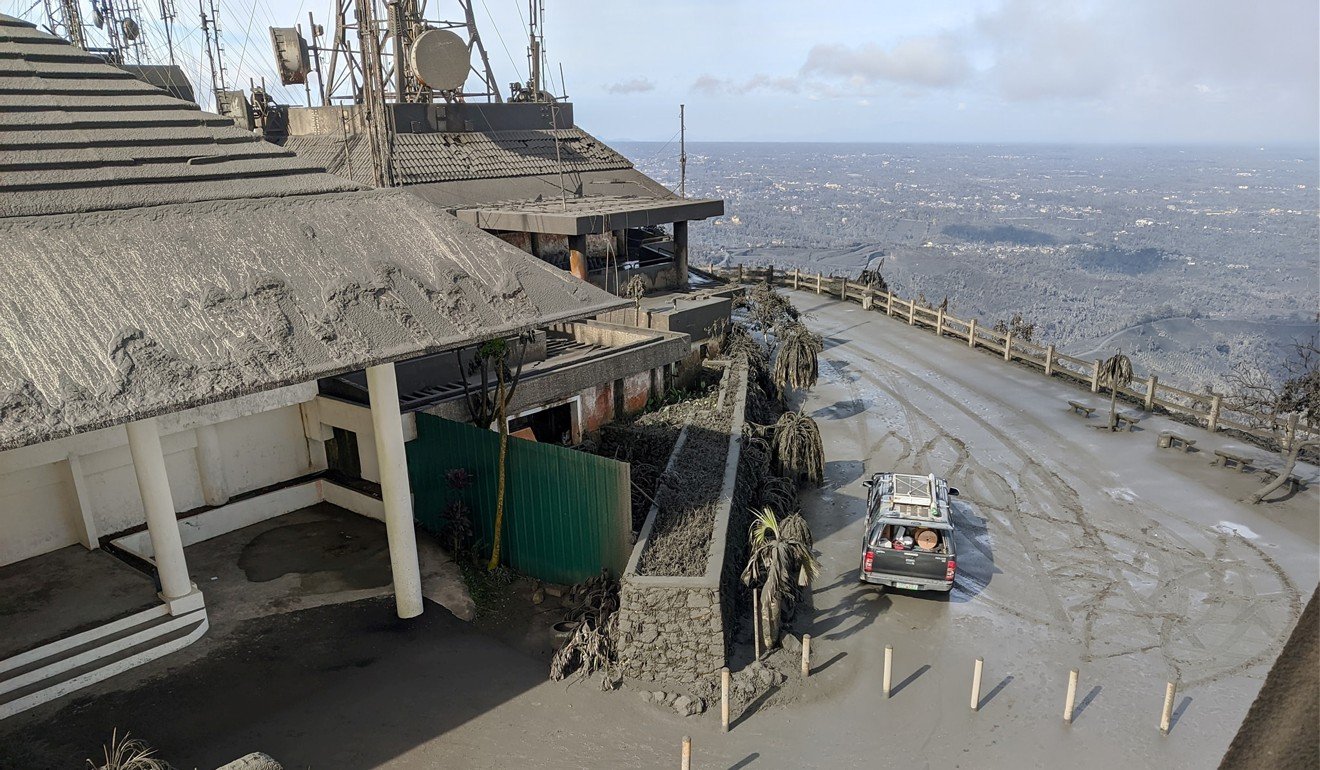
Explainer | Taal Volcano is the most deadly in the Philippines, killing more than 6,000 in its history. How big is its latest eruption?
- Thousands have been evacuated and Manila’s airport has been closed after a cloud of volcanic ash blew 65km north to the capital
- Sunday’s explosion, described as ‘a magmatic eruption’, could yet develop into a more violent, destructive blast
More than 23,000 people have been evacuated already – that number could eventually reach 200,000. The government has set aside US$50 million in emergency funding.
How strong was the eruption?
Sunday’s explosion, described as “a magmatic eruption”, could progress into a more violent, destructive blast. The Philippine Institute of Volcanology and Seismology (Phivolcs) has announced Alert Level 4, indicating “a hazardous explosion within hours or days”. It has urged the evacuation of areas within 14km of the volcano.
In a press conference, Phivolcs volcano monitoring and prediction division chief Antonia Bornas said: “We can’t say how strong the eruption will be, it may be as strong or stronger than historical precedents.”
Philippine nationals in Hong Kong worry about relatives’ safety
Debris produced by a volcanic eruption can also produce tsunamis on the lake.
“These kinds of hazards have happened during major eruption events … It’s not that high compared to typical earthquake tsunami in open seas but this can damage and impact people if they are on the shore,” Phivolcs director Dr Renato Solidum said, estimated the waves could be between one and three metres high.

What makes Taal so dangerous?
Taal is the most lethal of the Philippines’ 21 active volcanoes, although the country has more than 200 overall. Its eruptions have been recorded since the late 1500s but casualties were only recorded from 1754 onwards. So far, the volcano has caused at least 6,000 deaths.
According to Solidum, the eruption in 1754 lasted seven months.
“That can happen … we are closely monitoring,” he said, adding that an eruption of Taal is more dangerous than an explosion of the country’s other famous volcano, Mayon, because Taal can escalate faster.
Solidum explained that alert levels remain at zero when there is no activity.
“We raised Taal’s alert level to one on March 28, 2019,” he said, adding that the alert level jumped to two on Sunday before increasing to four in a matter of hours.
Taal is in fact a volcano complex, consisting of Taal Lake – the collapsed remnant of a colossal, prehistoric 6,000-metre volcano – with several islands.
Most eruptions come from the largest, Volcano Island, which has a crater filled with water and its own tiny island, Vulcan Point. In other words, Taal is an island within a lake on an island in a lake – all on the island of Luzon.
Philippines’ Taal Volcano eruption triggers dozens of quakes and mass evacuation
Taal is close to densely populated areas and readily accessible from Manila. Thousands of tourists make the trek to see Taal Lake from the famous Tagaytay ridge, which has developed into an exclusive residential area.
Phivolcs has designed Volcano Island a “danger zone” but this has not discouraged residents settling there, effectively right on top of the volcano. In 2007, a Korean company reportedly planned to open a health spa on the island but the government intervened to block the project.

What is the worst that can happen?
The 1754 eruptions were so powerful they altered the area’s geography. Taal Lake was an inlet leading out to the sea but the eruptions blocked the channel, turning the inlet into a lake and resulting in the seawater eventually becoming fresh water.
Another eruption in 1911 was preceded by two days of earthquakes. According to science author Maria Elena Paterno, a gigantic explosion, followed a day later by several more, could be heard 200km away.
The eruption killed 1,335 people in a few minutes.
“In Taal, red balls of fire shot up high above the crater,” she wrote. “A huge pillar of smoke and ash rose to the sky, broken by sudden flashes of lightning.”
A similar series of eruptions now could displace thousands, wreck villages, send dust into the air, endangering aircraft and cause a tsunami in the lake that could inundate surround villages.
“All towns around the volcano can be affected,” Bornas said.

